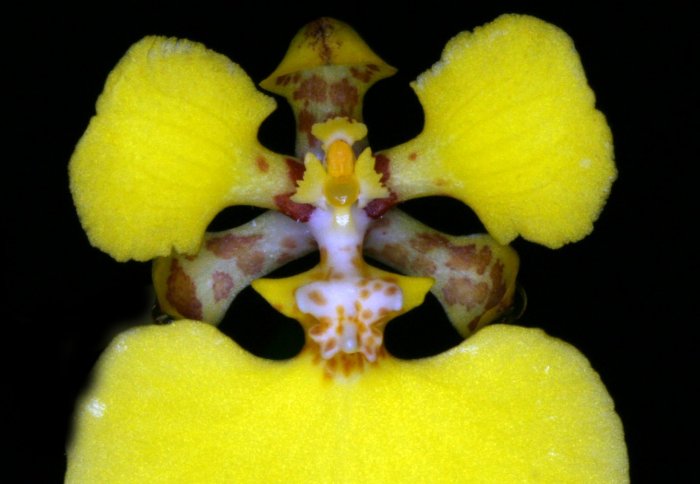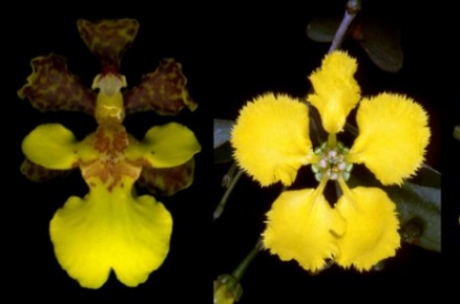
Many Oncidiinae orchids, like this Rossioglossum ampliatum, evolve to look like other flowers

Bees are tricked by orchids that disguise themselves as the brightly coloured flowers of neighbouring plants, according to new research.
The Oncidiinae group of orchids is one of the most diverse groups of flowering plant in the world, with around 1700 different species being found across South and Central America.
What is surprising about these flowers is that most of them are able to attract pollinators without rewarding them with the valuable oil or nectar which they receive from other flowers.
The scale and accuracy of the mimicry has surprised us, as it happens so many times and involves so many orchid species
– Vincent Savolainen
Professor of Organismic Biology
In the plant world, successful fertilisation comes down to enticing pollinators, such as bees, to transfer pollen from one flower to another. This is usually in return for a reward.
Researchers from Imperial College London and Kew Gardens have been looking at a specific orchid of the Oncidiinae group, which does not offer any reward: the Trichocentrum ascendens from South America.
In a ten-year study published in the journal Proceedings of the Royal Society B, they found that the Trichocentrum tricks pollinators by closely mimicking the colour and flower shape of another plant family, the Malpighiaceae, whose flowers produce a plentiful supply of oil.
Vincent Savolainen, Professor of Organismic Biology in Imperial's Department of Life Sciences, explains: "These reward-giving flowers have evolved a very special colour called bee-UV-green, that is highly distinguishable to bees' sensitive eyes. The Trichocentrum ascendens and other Oncidiinae orchids copy the special colour so precisely that bees are unable to distinguish between the flowers, visiting an orchid and pollinating them without the reward they may expect."

To a bee's eye, the orchid Trichocentrum ascendens (L) looks very similar to a Malpighiaceae flower, Stigmaphyllon lindenianum (R)
Some now believe this evolutionary trick is the key to the orchids' success. By not producing nectar, they can divert more energy to growing strong and producing more successful future generations.
It is now thought that this trickery could help these orchids to attract a wide range of pollinators, therefore accounting for the diversity of the Oncidiinae group. Professor Savolainen continues: "In this case the scale and accuracy of the mimicry has surprised us, as it happens so many times and involves so many orchid species."
Supporters




Article text (excluding photos or graphics) available under an Attribution-NonCommercial-ShareAlike Creative Commons license.
Photos and graphics subject to third party copyright used with permission or © Imperial College London.
Reporter
Jenny Mitchell
Department of Humanities

Contact details
Email: press.office@imperial.ac.uk
Show all stories by this author




Leave a comment
Your comment may be published, displaying your name as you provide it, unless you request otherwise. Your contact details will never be published.